 Crimson Skies by Eric S. Nylund, Mike Lee, Nancy Berman & Eric S. Trautmann
Crimson Skies by Eric S. Nylund, Mike Lee, Nancy Berman & Eric S. Trautmann
Del Rey, October 1st, 2002
Of late, I’ve been reading a number of swashbucklers and related media and I’ve become particularly interested in fictional sky pirates. These are found in a number of mediums including the 1996 The Phantom film which I mentioned in a previous post. The usual setting is the early age of flight where sophisticated aircraft weren’t restricted to large corporations but open to anyone with the technical skills and passion. As aircraft became more advanced, (and government regulation caught up), this quickly limited the amount of people who could be involved though there is still a healthy community of light aircraft enthusiasts today. There are also a number of other examples that come to mind such as the 2004 Sky Captain and the World of Tomorrow (which I only remembered existed as I began this post). Also Sega’s Skies of Arcadia role-playing game which has a fantasy/anime style setting though I’ve not played it.
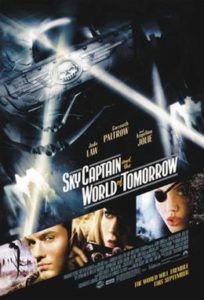
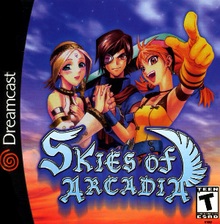
One largely forgotten example of sky pirates is the short-lived Crimson Skies series which began as a tabletop game but is better known (at least to me), for Crimson Skies: High Road to Revenge on the original Xbox. I reviewed this game years ago and was interested in the tie-in book which while cheaply available in the United States, was prohibitively expensive to ship. I found a cheap enough copy earlier this year though and decided to bite since it kept coming to mind and I was already on a pirate binge.
Microsoft put a lot of money into promoting the original Xbox console which ended up having an impressive variety of titles in multiple genres. The massive success of Bungie’s Halo: Combat Evolved overshadowed most of these but there were still a lot of great games to choose from. Crimson Skies was one of the early titles that took advantage of the Xbox Live online service which while standard on consoles now, was still a novelty then. This was also interesting for the tie-in novels which companies like Blizzard were already doing with WarCraft, StarCraft and Diablo and indeed Vox Day had done with Rebel Moon Rising in collaboration with Bruce Bethke (which is a review for another post). This is now standard in the industry but it was a new and rather innovative way to both promote the games and expand on the world in which they took place. The quality varied of course — and still does.
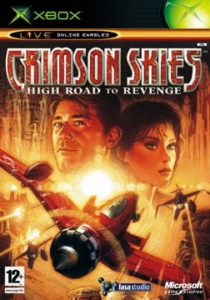
The subject for this review is not a novel but three related short stories based on characters from the game included in one book. As indicated above, multiple authors contributed and the only one I was familiar with was Eric S. Nylund who wrote Halo: The Fall of Reach which from memory, was a solid novel that gave interesting background to the Halo universe. Though there are multiple authors, the quality of writing is about the same throughout which I would summarise as “not bad”.
One problem (for me and the book), is that I don’t remember the game it is based on that well as I played it through once years ago and the plot was definitely secondary to the action; especially if you were a contemporary player who had access to the online functions. This was a problem for the book too which released roughly a year before the game. One could have easily read and forgotten most details by the time the game it was promoting came out a year later.
The novel is cleverly written as a 1930s pulp adventure magazine called Spicy Air Tales complete with the fictional editor Nero MacLeon. The three stories introduce three separate characters: Paladin Blake, Jonathon “Genghis” Kahn and Nathan Zachary. The latter is the protagonist of the game though Kahn also plays a significant role in the game’s narrative. I cannot recall whether or not Paladin Blake makes an appearance as I did not see him in any of the cutscenes that I viewed before writing this. He may appear in-game at one point but I can’t be sure without going back and playing it.
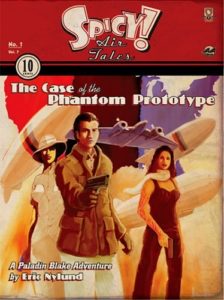
Probably the more interesting aspect than the game is the setting which is an alternative history where the United States has broken apart following the Great War. This is no doubt better developed in the manual for the table-top but the book includes a helpful appendix and the world is well-established in all three short stories. The break-down of the United States leads to disruptions with rail travel and so air becomes the principal method of transport; including airships and light aircraft. The chaotic state of the continent also opens the way for sky pirates which the book is primarily concerned with.
This setting now has wider appeal due to the current state of the States as we are seeing multiple ripples that could lead to just such a break-up. The difference of course is that the current USA is considerably less stable — and certainly less homogenous than it was a century ago when the early ruptures of the world of Crimson Skies began. So such a scenario today won’t see zeppelins and propeller aircraft and one would expect the same of jet aircraft as the knowledge for both piloting and maintenance is considerably more limited and expensive. One would expect that piracy and banditry (which certainly will exist), would be mostly confined to roads and waterways if or more likely when a break-up occurs. Still, this is a fun fantasy setting and as with all such fantasies, the reader is safely protected from the less savoury realities of such a world.
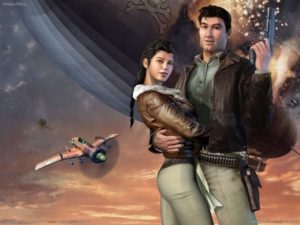
I haven’t said much about the content of the stories and this is simply because I don’t have much to say. They were all engaging and each one could be comfortably read in a sitting. I probably enjoyed The Manchurian Gambit which involves Jonathon Kahn the most. It had a number of interesting twists and took the characters on a larger adventure that involved the Empire of Japan which is counterfactually unhindered by US presence in the Pacific. Bayou Blues, which is the only one with the protagonist from the game is perhaps the most disappointing but it does give a good background to the events leading into the game. The video game allows the player fly and upgrade multiple types of aircraft. These are mentioned frequently across all three stories but I could not recall any of them outside the distinctively red Devastator that Zachary flies.
Unless you have an interested in the related media, this collection isn’t worth seeking on its own. It is very dependent on the source material which is not necessarily true of all media tie-ins despite the name. So for me, this is very much a case of liking the concept a whole lot more than the product and my interest in finding more novels and films with sky pirates. I have named a number of notable examples in this post but I still think it is under-explored and has potential — especially with video games. The early 20th century setting is not even necessary as a more contemporary or fantasy setting works just as well.
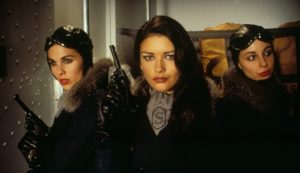 Catherine Zeta Jones plays the perfect femme fatale sky pirate in The Phantom.
Catherine Zeta Jones plays the perfect femme fatale sky pirate in The Phantom.
